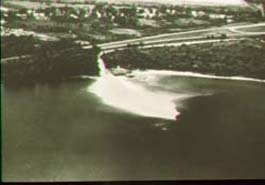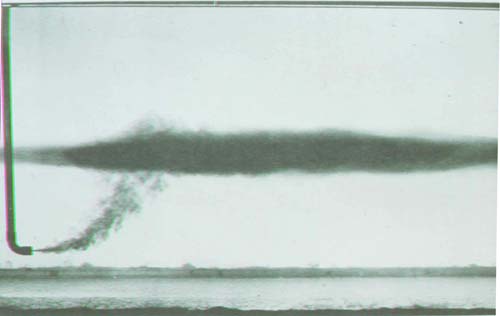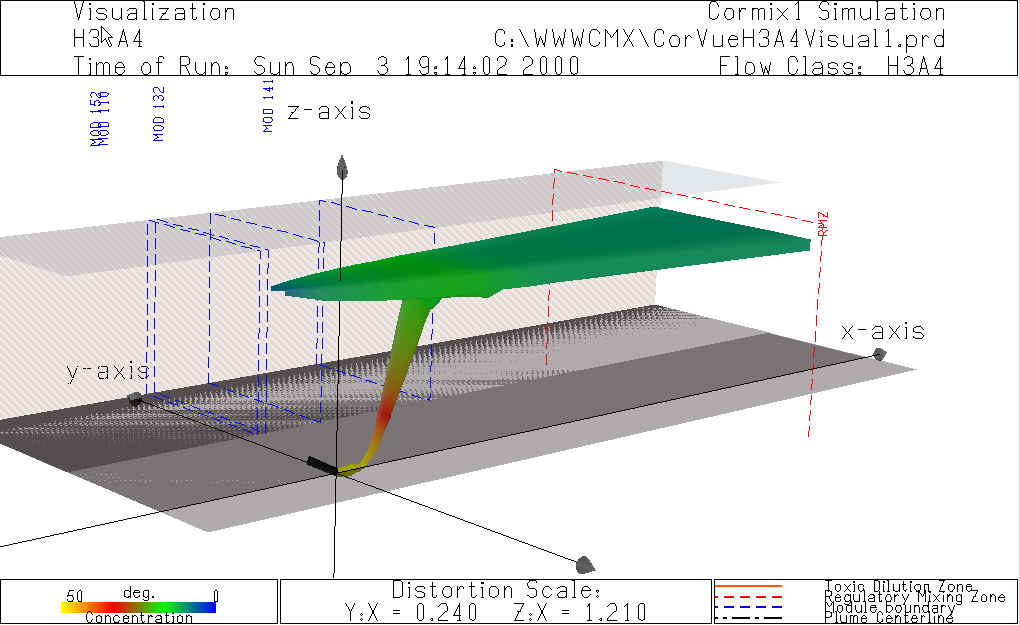The first step towards specifying ambient conditions in a lake is to determine whether the receiving water body should be
considered "bounded" or "unbounded."
It is usually necessary to have access to cross-sectional diagrams of the water body.
These should show the area normal to the ambient flow direction at the discharge site and at locations further downstream.
These cross-sections should then be schematized into equivalent rectangular areas normal to the flow.
The scematized cross-sections should preserve the effect of boundary interaction on the discharge flow.
Regulatory mixing zones in lakes may occur in the near-field or in
the far-field after boundary interaction occurs.
Many lakes have very small or zero ambient velocity. In this case, steady-state mixing zone analysis is only possible for
the near-field.
Furthermore, there is no far-field mixing because there is no ambient velocity field sufficient
to carry away discharge material.
Mixing behavior is therefore dependent on local geometry.
Design and Modeling of Lake Wastewater Disposal Systems
Proper outfall siting and design is required for efficient wastewater treatment by utilization of the natural assimilative capacity of lakes.
Designs which trap flow in internal density current layers may be particularly advisable to avoid layers with both
high nutrients and available light.
Also multiport diffusers which do not cause acceleration zones generally are desirable in lakes where diffuser-induced currents would be undesirable.
The CORMIX - GT advanced tools CorSens, CorVue, and CorSpy can assist the analyst in mixing zone analysis for outfall design specification.





